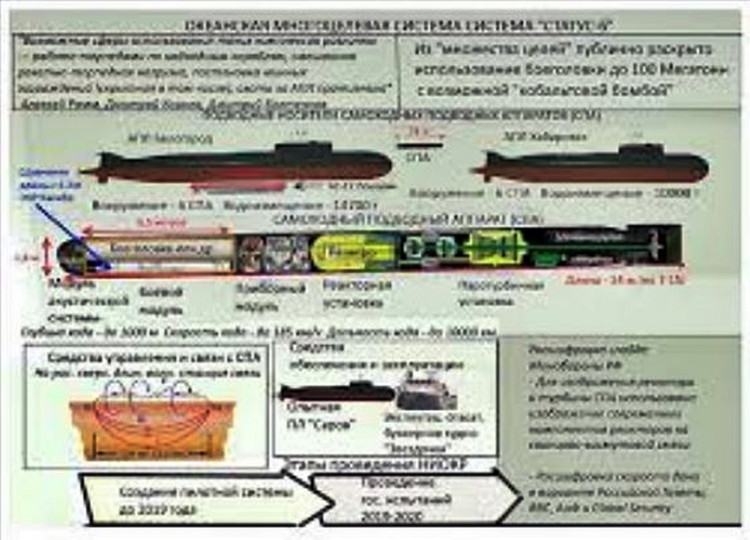The U. S. Department of Defense is taking seriously the threat posed by what might well be only a Russian "propaganda weapon" that will if real, be capable of annihilating an entire U.S. Navy base with a 100 megaton nuclear warhead.
The weapon in question is a nuclear submarine drone called the "Ocean Multipurpose System Status-6" (nicknamed "Kanyon") by the Russians. The Pentagon said Kanyon can be armed with a 100 megaton nuclear warhead.
Some military analysts refer to Kanyon as a nuclear torpedo or an underwater cruise missile. One pundit famously described Kanyon as the "world's slowest and most vulnerable ICBM" (intercontinental ballistic missile).
This torpedo (or whatever its true nature is) is massive for a torpedo and will be the world's largest -- if it's ever built. The Pentagon estimates Kanyon to be 24 meters long and 1.6 meters in diameter. In contrast, the U.S. Navy's Mark 48 heavyweight submarine-launched torpedo measures 5.8 meters in length and 53 cm in diameter.
Kanyon has a range of 10,000 kilometers. Its top speed comes to 104 km/h and it can submerge to a depth of 1,000 meters. It can be launched from at least two different classes of nuclear submarines operated by the Russian Navy, including the Oscar II cruise missile submarine.
In 2017, the Russian Navy began upgrading one of its Oscar II subs, the RFS Belgorod (K-139), to enable it to launch Kanyon. Belgorod will carry from four to six of these robot nuclear bombs.
Russia will use Kanyon to destroy U.S. Navy submarine bases and ports frequented by American submarines. Among these juicy targets is Naval Submarine Base Kings Bay in Georgia, home port to the United States Atlantic Fleet's ballistic missile nuclear submarines armed with Trident nuclear missiles.
Once launched, Kanyon might loiter at slow speeds for weeks as it stealthily creeps-up on its target. It then makes a high-speed dash towards its target, which will likely be a U.S. Navy submarine base or port. The torpedo's 100 megaton warhead will do the rest.
But more important than these technical specifications is the vexed question about whether this weapon is real or a propaganda weapon being made to seem real by a Russian disinformation campaign.
Some military analysts point out that if Kanyon were just a propaganda or paper weapon, it would be a good example of the effectiveness of Russian disinformation. Whatever the case might be, the Pentagon is erring on the side of caution by acting as if Kanyon is a real, physical weapon that must be defeated.






